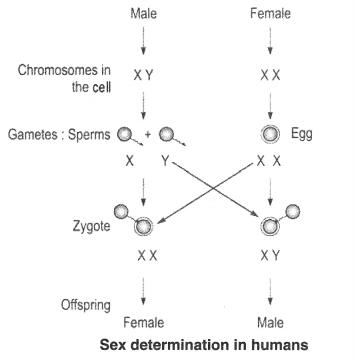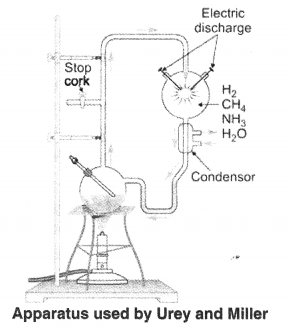NCERT Solutions for Class 10 Science chapter 9 Heredity and Evolution: In this chapter we discussed how some amount of variation is produced even during asexual reproduction. Students who are preparing for their Class 10 exams and searching for chapter-wise NCERT Solution for Class 10 Science must go through NCERT Solutions for Class 10 Science Chapter 9 Heredity and Evolution. Checkout previous chapter – NCERT Solution for Class 10 Science Chapter 8 How Do Organisms Reproduce?
ALSO CHECK – Download the free Class 10th Notes here
These NCERT Solution for Class 10 Science Chapter 9 Heredity and Evolution is prepared by our best subject experts teachers group thats help students to understand all the topics easily. With the help of these NCERT Solution for Class 10 Science, students can understand the complex topics of class 10 science. We all know Science is a subject that needs a clear understanding of the concepts and topics to score well in it.
Also Check – NCERT Solutions for Class 9 Maths
NCERT Solutions for Class 10 Science Chapter 9 In-text Questions
Page no.- 143
Question 1.
If a trait A exists in 10% of a population of an asexually reproducing species and a trait B exists in 60% of the same population, which trait is likely to have arisen earlier ?
Answer:
Trait B is more probable to arise early as this trait has already been existing and replicating in a larger percentage of the population as compared to trait A
Question 2.
How does the creation of variations in a species promote survival ?
Answer:
The variations provide stability to the population of various species by preventing them from getting wiped out during adverse conditions.
The natural environment also changes, and variations in species which become suited to the environment help it to survive.
Page Number: 147
Question 1.
How do Mendel’s experiments show that traits may be dominant or recessive ? [AICBSE 2015]
Answer:
Mendel showed that the traits can either be dominant or recessive through his experiments that focused on mono-hybrid cross. The experiment involved him crossing tall (TT) pea plants with dwarf (tt) pea plants. The resultant plants which formed after fertilization represented the F1 (or filial) generation. All the F1 plants were tall. Mendel then proceeded to self-pollinate the filial generation plants and the result was that 1/4th of the plants obtained in the F2 generation were dwarfs. From this experiment, Mendel concluded that the F1 tall plants were not true-breeding, instead they carried the traits for both tall and dwarf heights. A portion of the plants were tall due to the fact that the traits for tallness were dominant over the traits for dwarfness. This cements the notion that traits can either be dominant or recessive.
Question 2.
How do Mendel’s experiments show that traits are inherited independently ? [AICBSE 2015]
Answer:
Mendel took two pairs of alternate expression of two traits and carried out dihybrid crosses by crossing them. The traits appeared in first generation were termed as dominant. When he used these F1 progeny to generate F2 progeny by self-pollination plants of different types were produced. In some plants both the traits were dominant, while in some plants both were recessive and some plants exhibited mixed traits. This indicates that traits are inherited independently.
Question 3.
A man with blood group A marries a woman with blood group O and their daughter has blood group O. Is this information enough to tell you which of the traits – blood group A or O – is dominant ? Why or why not ?
Answer:
Given information is not enough to tell us which characteristics are dominant –blood group A or O. Blood type A is always dominant in ABO blood and blood type O is always recessive. Here, the father’s blood group may be genotypically AA (homozygous) or AO (heterozygous), whereas that of mother can be OA or OO.
Question 4.
How is the sex of the child determined in human beings ?
OR
“The sex of a newborn child is a matter of chance and none of the parents may be considered responsible for it.” Justify this statement with the help of a flow chart showing determination of sex of a newborn. [CBSE (Delhi) 2013]
Answer:
Half of the male gametes (sperms) carry X chromosome and other half carry Y chromosomes. All the female gametes carry only X chromosomes. When a sperm fertilizes an egg, the following situations become possible.
- (i) When a sperm carrying X chromosome fertilises an egg that contains only X chromosome), the resulting zygote develops into a female (XX condition).
- (ii) When a sperm carrying Y chromosome fertilises an egg (that contains only X chromosome), the resulting zygote develops into a male (XY condition).
Thus there are 50 – 50 chances of a male or female child and none of the parents may Sex determination in humans be considered responsible for it.
The sex-determination mechanism is shown alongside.
Page Number: 150
Question 1.
What are the different ways in which individuals with a particular trait may increase in a population ?
Answer:
An individual attribute could increase in a population within the following 2 ways:-
(a) Natural selection: if an attribute is useful to a population, it’ll increase naturally.
For example – mosquitoes which are resilient against a particular pesticide will pass on its genes, so that future generations become resistant as well. The mosquitoes which are affected by the pesticide die out.
(b) Genetic drift: if a species faces a catastrophic event where most of the population is wiped out, the surviving population can pass on their traits to the following generations. This may result in a rise of the attribute within the population.
Question 2.
Why are traits acquired during the life-time of an individual not inherited ?
Answer:
The traits acquired during the life-time are changes in the non-reproductive cells of the organisms and are not capable of being passed on to the next generation.
Question 3.
Why are the small numbers of surviving tigers a cause of worry from the point of view of genetics ?
Answer:
The small numbers of surviving tigers are a cause of worry from the point of view of genetics because in tigers there are negligible genetic variations. Due to this they are not well adapted. The rapid environmental changes cannot be favouable for them. If these changes are not controlled, tigers would be wiped out.
Page Number: 151
Question 1.
What factors would lead to the rise of a new species ?
Answer:
Factors that would result in a new species are as follows:
(a) Mutation.
(b) Genetic drift.
(c) Natural selection.
(d) Geographical isolation.
(e) Generative isolation for prolonged periods
(f) Environmental factors on the isolated populations.
(g) Quantum of genetic variant transmissible from one generation to the following generation.
Question 2.
Will geographical isolation be a major factor in the speciation of a self- pollinating plant species ? Why or why not ?
Answer:
The geographical isolation cannot be major factor in the speciation of a self-pollinating plant species because it does not have to look the plants for its process of reproduction to be carried out.
Question 3.
Will geographical isolation be a major factor in the speciation of an organism that reproduces asexually ? Why or why not ?
Answer:
Geographical isolation cannot be a major factor in the speciation of an asexually reproducing organism because it does not require any other organism to carry out reproduction.
Page Number: 156
Question 1.
Give an example of characteristics being used to determine how close two species are in evolutionary terms.
Answer:
If similar characteristics are shown in different organisms, then these are considered to be inherited from the common ancestry. It also shows the closeness of the species.
For example, bats and birds have some similarity in their wings, so they are closely related, while lizard and squirrel do not have wings so these are not closely related to the birds and bats.
Question 2.
Can the wing of a butterfly and the wing of a bat be considered homologous organs ? Why or why not ?
Answer:
The wings of a butterfly and the wings of a bat cannot be considered to be homologous organs because they have different basic designs though they are used for the same purpose of flying. They are analogous organs.
Question 3.
What are fossils ? What do they tell us about the process of evolution ?
Answer:
Fossils : Fossils are the remains or traces of a dead organism. These are formed through the formation of sedimentary rocks. They provide following information on the process of evolution.
- They tell about the changes that occured on the earth’s surface and the corresponding organisms.
- They tell about the gradual development of complex structured organisms from simple structured organisms.
- It is known through them that birds are evolved from reptiles.
- They state that angiosperms are developed from pteriodophytes and gymnosperms.
- They exhibit the process of humana evolution.
Page Number: 158
Question 1.
Why are human beings who look so different from each other in terms of size, colour and looks said to belong to the same species ?
Answer:
While human beings do vary in color and general appearance, their genetic makeup is identical to any other human. One of the speculations put forth for our drastic changes is due to evolutionary pressure – where the need to be easily recognized pushed us towards having widely different faces.
Question 2.
In evolutionary terms, can we say which among bacteria, spiders, fish and chimpanzees have a ‘better’ body design ? Why or why not ?
Answer:
In evolutionary terms, it is difficult to say that among bacteria, spiders, fish and chimpanzees which has a ‘better’ body design as it involves the development of the most efficient and appropriate features in a body design for survival and adaptation. One of the examples is, organisms having a complex body design face several difficulties while surviving in particular situations whereas, organisms with the simplest body design like bacteria can survive in extreme habitats. Thus, Evolution only leads to the development of complex body designs and it cannot be equated with progress.
NCERT Solutions for Class 10 Science Chapter 9 Textbook Questions
Exercises Page no.: 159
Question 1.
A Mendelian experiment consisted of breeding tall pea plants bearing violet flowers with short pea plants bearing white flowers. The progeny all bore violet flowers, but almost half of them were short.
This suggests that the genetic make-up of the tall parent can be depicted as:
(a) TTWW
(b) TTww
(c) TtWW
(d) TtWw
Answer:
(c) TtWW
Question 2.
An example of homologous organs is :
(a) our arm and a dog’s fore-leg
(b) our teeth and an elephant’s tusks
(c) potato and runners of grass
(d) all of the above
Answer:
(d) All of the above
Question 3.
In evolutionary terms, we have more in common with :
(a) a Chinese school-boy
(b) a chimpanzee
(c) a spider
(d) a bacterium
Answer:
(a) A Chinese school-boy
Question 4.
A study found that children with light coloured eyes are likely to have parents with light coloured eyes. On this basis, can we say anything about whether the light eye colour trait is dominant or recessive ? Why or why not ?
Answer:
Knowledge of at least 3 generations is required for finding if an attribute is dominant or recessive. Hence, it is not possible to identify if the given trait is dominant or recessive.
Question 5.
How are the areas of study-evolution and classification interlinked ?
OR
‘Two areas of study namely ‘evolution’ and ‘classification’ are interlinked”. Justify this statement. [AICBSE 2016]
Answer:
Classification and evolution are two related fields of biology. Evolution pertains to how organisms evolve and classification deals with finding out how two species are related to each other. For example, evolution and fossil evidence point to the fact that Australopithecus afarensis is considered one of our earliest ancestors. And classification tells us that Australopithecus afarensis belongs to the genus Homo, which is also the same genus as modern humans.
Question 6.
Explain the terms analogous and homologous organs with examples. [CBSE 2011,2013, 2014]
Answer:
Analogous organs : Analogous organs are those organs that have a different structural design as well as origin, however perform similar functions. For example: The wings of birds and insects.
Homologous organs : Homologous organs are those organs that have the basic structural design as well as origin, however, serve different functions.
For example, The wing of a bat, flipper of a seal, front leg of a horse and arm of a man are homologous organs.
Question 7.
Outline a project which aims to find the dominant coat colour in dogs.
Answer:
Suppose a black homozygous male is mated with a white homozygous female. If the progeny has all black dogs then the dominant coat colour is black.
Question 8.
Explain the importance of fossils in deciding evolutionary relationships.
Answer:
Fossils play important role in providing evolutionary evidences because by knowning the age of fossils we can know about the evolution process of an organism.
For example, a fossil bird called archaeopteryx that looked like a bird had many other features of reptiles. It had feathered wings like those of birds, but teeth and tail like those of reptiles. Archaeopteryx is, therefore, a connecting link between the reptiles and birds, and hence suggests that the birds have evolved from the reptiles.
Question 9.
What evidence do we have for the origin of life from inanimate matter ? [CBSE 2011, 2014]
Answer:
A British scientist J.B.S. Haldane at first in 1929 suggested that life is originated from inanimate matter. According to him life must have developed from the simple inorganic molecules which were present at that time. Later, Miller and Urey in 1953 presented its evidences. They assembled an apparatus to create an early earth atmosphere which was supposed to consist of gases like methane, ammonia and hydrogen sulphide, etc. over water. This was maintained at a temperature just below 100°C and electric sparks were then passed through the mixture of gases to stimulate lightning for about one week. At the end of one week, it was found that about 15 per cent of carbon (from methane) had been converted into simple compounds and amino acids which make up protein molecules formed in living organisms. This experiment provides the evidence that the life originated from inanimate matter (or lifeless matter) like inorganic molecules.
Question 10.
Explain how sexual reproduction gives rise to more viable variations than asexual reproduction. How does this affect the evolution of those organisms that reproduce sexually ? [CBSE 2011,2014]
Answer: Sexual reproduction causes a lot of viable variations because of the following reasons:
(a) Error in copying of DNA (though it was rare)
(b) Random segregation of paternal and maternal chromosome at the time of sex cell formation.
(c) Exchange of genetic material between homologous chromosomes during the formation of gametes.
(d) Accumulation of variations occurred because of reproduction over generation after generation and choice naturally created wide diversity.
(e) In case of asexual reproduction, variation is severely limited as there is only one parent involved. Hence, the offspring is genetically similar to the parent
Question 11.
How is the equal genetic contribution of male and female parents ensured in the progeny ? [CBSE 2011, 2013]
Answer:
Genetic material in most organisms is present in pairs of chromosomes. Gametes in the sexually reproducing organisms are formed by the process of meiosis during which half of the genetic material goes into each gamete. When the gametes from male and female parents fuse with each other during sexual reproduction, the normal complement is restored. Half of the genetic material comes from the female and half from the male.
Question 12.
Only variations that confer an advantage to an individual organism will survive in a population. Do you agree with this statement ? Why or why not?
Answer:
Yes, only variations provide an advantage to individual organisms that will survive in a population. For example, variations that lead to the increase in heat-resistance in bacteria is very useful for survival if it finds itself in an environment where there is a sudden increase in ambient temperature. This will determine the difference between life and death for the bacteria.







